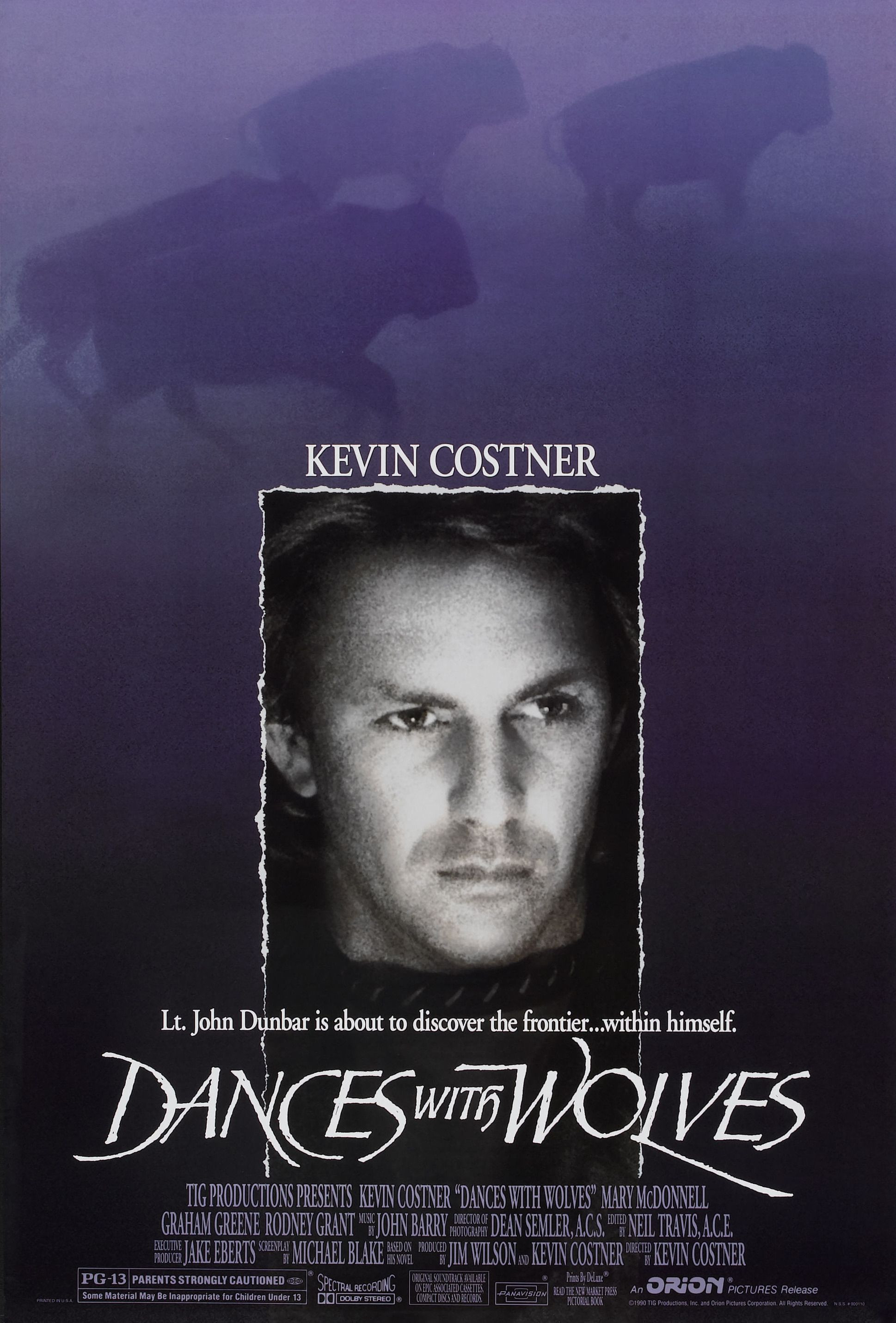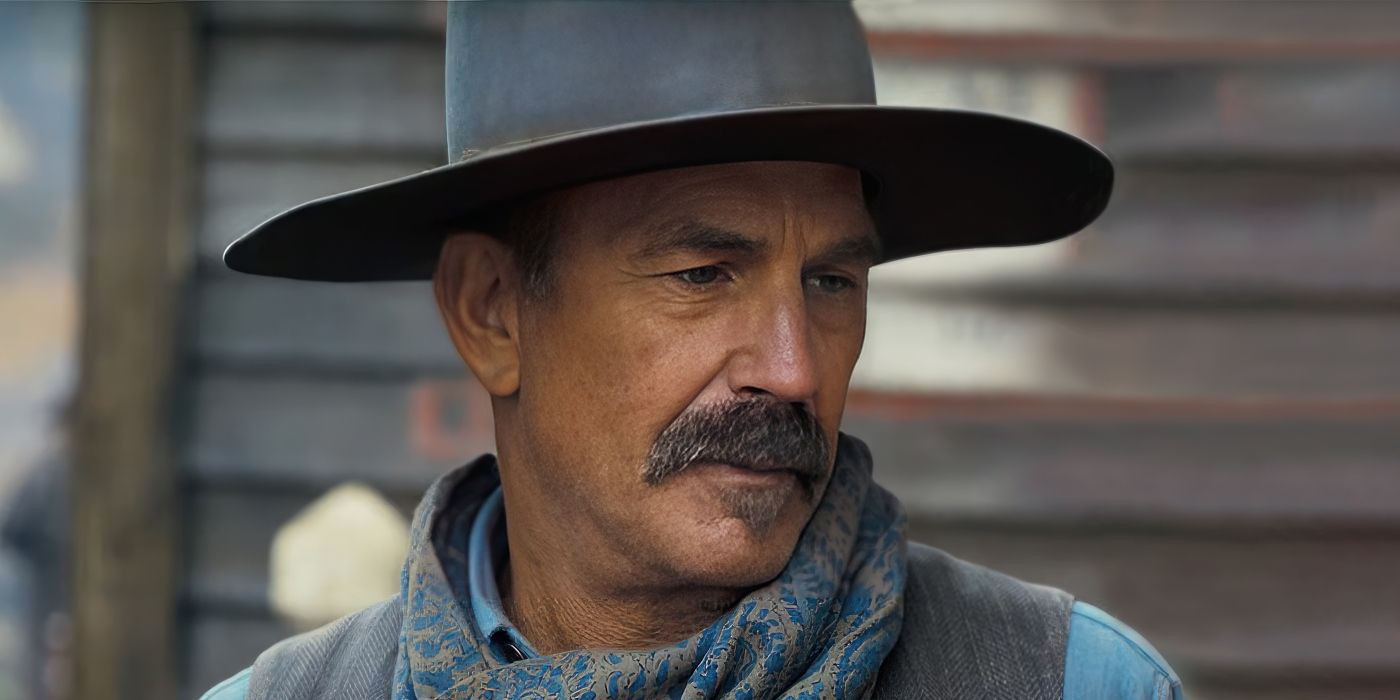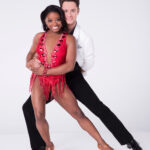Dances with Wolves, a cinematic masterpiece, masterfully blends historical elements with fictional narratives to create an engaging viewing experience. At ten-dance.com, we want to help you explore the exciting world of dance and its historical context. Let’s delve deeper into the fascinating connection between dance, history, and storytelling. Explore various styles and historical influences, and find the perfect class to kickstart your dance journey. Learn more about cultural accuracy, historical inspirations, and movie adaptations.
1. What Is Dances With Wolves About?
“Dances with Wolves,” directed by and starring Kevin Costner, tells the story of Lieutenant John J. Dunbar, a Union soldier who journeys to the western frontier and forms a deep connection with a Lakota tribe. The film is a sweeping epic that explores themes of cultural understanding, identity, and the clash between civilization and the natural world.
After an act of bravery during the Civil War, Lt. John J. Dunbar (Kevin Costner) requests a transfer to the western frontier. Arriving at Fort Hays, he’s assigned to the remote Fort Sedgwick, unaware that his assignment hasn’t been officially recorded. Dunbar decides to stay and defend the outpost. He encounters a neighboring Sioux tribe and gradually befriends them, especially Stands With A Fist (Mary McDonnell), a white woman adopted into the tribe.
 Kevin Costner in Dances with Wolves
Kevin Costner in Dances with Wolves
Dunbar’s relationship with the Sioux deepens, earning him the name “Dances With Wolves” due to his unique bond with a lone wolf named “Two Socks.” He eventually abandons his post, marries Stands With A Fist, and becomes fully integrated into the tribe. His newfound harmony is disrupted when the U.S. Army captures him, treating him as a traitor. The Sioux tribe rescues Dunbar, welcoming him back. He and Stands With A Fist choose to leave the tribe, venturing into the mountains to forge their own path.
2. Was John Dunbar A Real Person?
While the character of Lieutenant John J. Dunbar in “Dances with Wolves” is fictional, a real person named John Brown Dunbar lived during the same period and had connections to Native American culture. While Lt. John J. Dunbar is a fictional character created by Michael Blake, the movie’s plot is based on plausible and actual occurrences.
Born to missionary parents, John Brown Dunbar spent his childhood among the Pawnee tribe. According to a 1991 article in The Day, this Dunbar served in the American Civil War. His father, a Presbyterian minister also named John Dunbar, eventually gave up his mission because the Pawnee people were too difficult to convert.
After the war, the younger Dunbar taught tribal languages at Washburn College in Topeka, Kansas, drawing on his upbringing among the Pawnee. His notes on Pawnee culture and folklore were essential to George Bird Grinnell’s book, “Pawnee Hero Stories and Folk-tales,” one of the most detailed accounts of Pawnee history.
 Kevin Costner in Dances with Wolves
Kevin Costner in Dances with Wolves
Screenwriter Michael Blake stated that he chose the surname “Dunbar” from a list of Civil War soldiers without knowing there was a real John Dunbar who lived during that time. The events in “Dances With Wolves” are plausible, even though Costner’s John Dunbar is a work of fiction, according to Blake. He based his understanding of Native American culture on William Nye’s book, Plains Indians Raiders, which coincidentally used the elder John Dunbar’s research. Judith Boughter, a University of Nebraska instructor, points out that the Pawnee were victims of the Sioux, contrary to the movie’s portrayal.
3. Is Mary McDonnell’s Character Based On A Real Person?
Yes, the character Stands With A Fist, played by Mary McDonnell, is inspired by the real-life story of Cynthia Ann Parker, who was captured by the Comanche as a child and assimilated into their culture. She became a member of a Native tribe after her people were slaughtered, which might seem absurd, but it has happened before.
Cynthia Ann Parker’s story adds another layer to the historical context of “Dances with Wolves,” showing the complex interactions between different cultures during the American frontier. She was captured during a Comanche raid on Fort Parker and lived with the Comanche for over two decades.
She was inducted into the tribe at age nine and lived among the Comanche for over twenty years. Eventually, she married Chief Peta Nocona and had three children, including Quanah Parker, the last free Comanche chief. During the Pease River Massacre, Texas Rangers captured Parker (along with her daughter) and returned her to her biological family. Parker, like Stands With A Fist, never fully adjusted to her Anglo-American roots and identified as Comanche for the rest of her life. Michael Blake appears to have based his Western epic on Parker’s story.
 Kevin Costner in Dances with Wolves
Kevin Costner in Dances with Wolves
At ten-dance.com, we encourage you to explore the cultural elements of dance and storytelling. Dance is a powerful tool that transcends cultures and connects people from all walks of life.
4. What Cultural And Historical Realities Are Reflected In The Movie?
“Dances with Wolves” incorporates many historical and cultural realities of the American West, making it more authentic than typical films about Native Americans from that period. The Union bases seen in the movie, while fictionalized, are based on the real-life history of the Kansas-Colorado border region where such forts existed during the time.
The film also pays close attention to costuming. According to Cathy Smith, who restored Native American artifacts, “Dances with Wolves” set a high standard for accuracy in its portrayal of Native American attire and props. The Lakota language spoken in much of the film was translated by Doris Leader Charge, a Lakota woman, adding another layer of authenticity.
The Pawnee-Sioux conflict is somewhat misrepresented, but the costumes are accurate. Cathy Smith, who has spent most of her career restoring Native American artifacts, said that “Dances with Wolves” set an almost impossible standard. As she told Entertainment Weekly, “I don’t think there has ever been a film about Indians that was done correctly in terms of costumes or props. Dressing all these warriors and having them in front of you on horseback going on a buffalo hunt was like going back in time.”
Doris Leader Charge (who played Pretty Shield) translated Michael Blake’s script into Lakota. Dances With Wolves is more accurate than most films because it is spoken in Lakota and Pawnee, as well as American English.
5. What Was The Native American Response To The Film?
The Native American community had mixed reactions to “Dances with Wolves.” Some praised the film for its sympathetic portrayal of Native American culture, while others criticized it for historical inaccuracies and stereotypes.
Michael Smith, director of the American Indian Film Festival, noted that many in the Native community, particularly among the tribes, felt positively about the film. However, Oglala Lakota activist Russell Means criticized the use of feminine Lakota language by some actors, including Kevin Costner, which he found humorous.
Some Native Americans appreciated Kevin Costner’s vision, while others did not. Russell Means, an Oglala Lakota activist, commented in 2009, “Lakota has a male-gendered language and a female-gendered language. When I went to see it with a bunch of Lakota guys, we were laughing because some of the Indians and Kevin Costner were speaking in the feminine way.”
 Kevin Costner in Dances with Wolves
Kevin Costner in Dances with Wolves
At ten-dance.com, we encourage dialogue and understanding. Learning about the history of dance and its cultural significance enhances our appreciation for the art form and the people who created it.
6. How Did Kevin Costner’s Dances With Wolves Impact The Western Genre?
“Dances with Wolves” is credited with revitalizing the Western genre in the 1990s after a period of decline. The film’s success demonstrated that audiences were still interested in Western stories, especially those that offered a more nuanced and respectful portrayal of Native American culture.
Kevin Costner’s film played a significant role in renewing interest in the Western genre, which had been in a slump since the release of “Heaven’s Gate” in 1980. “Dances with Wolves” became one of only three Westerns to win an Academy Award for Best Picture, solidifying its place in cinematic history.
The film revolves around Lt. John J. Dunbar (Kevin Costner), who, after an act of bravery during the American Civil War, requests his next assignment on the Western frontier. Arriving at Fort Hays, Dunbar is assigned to the remote outpost of Fort Sedgwick, though there’s no record of his assignment.
Despite this, Dunbar stays and defends the outpost from a local tribe of Pawnee, while befriending the neighboring Sioux tribe, particularly Stands With A Fist (Mary McDonnell), a white woman who was assimilated into the tribe. The film’s critical and commercial success helped pave the way for other Westerns in the following years.
7. How Has Kevin Costner Continued To Contribute To The Western Genre?
Kevin Costner has remained a prominent figure in the Western genre, both in film and television. He has starred in and directed several Westerns, including “Open Range” and “Hatfields & McCoys.” He has also starred in the hit television series “Yellowstone,” which has further solidified his status as a contemporary Western icon.
Kevin Costner has not slowed down regarding Westerns. Costner ventured into television in the 2010s, playing historical and fictional characters in Western settings. With his multipart feature film, Horizon: An American Saga, on its way, the filmmaker appears keen on telling post-Civil War stories.
The first two chapters of Horizon are set to hit theaters this summer, while Chapter 3 is still in development. Costner has expressed interest in returning to more Yellowstone down the line, solidifying his love for horse operas.
 Kevin Costner Horizon
Kevin Costner Horizon
At ten-dance.com, we believe that dance is more than just movement; it’s a way to connect with history, culture, and community. Explore the rich tapestry of dance and discover how it can enrich your life.
8. How Can You Learn More About Native American Dance And Culture?
There are many resources available to learn more about Native American dance and culture. Museums, cultural centers, and educational websites offer valuable information and insights into the traditions and histories of various Native American tribes.
Additionally, attending Native American cultural events and powwows can provide firsthand experiences and opportunities to learn from Native American dancers and cultural practitioners. Remember to approach these experiences with respect and a willingness to learn.
Here are some resources to dive deeper into Native American dance and culture:
-
Museums and Cultural Centers:
- National Museum of the American Indian: Located in Washington, D.C., and New York City, this museum offers exhibits and programs about Native American history and culture.
- Heard Museum: Located in Phoenix, Arizona, this museum is dedicated to the art and culture of Native Americans in the Southwest.
-
Educational Websites:
- Native American Heritage Month: This website, run by a coalition of government agencies, offers resources and information about Native American history and culture.
- Indian Arts and Crafts Board: This website provides information about authentic Native American art and crafts.
-
Books and Publications:
- “Bury My Heart at Wounded Knee” by Dee Brown: A historical account of the Native American experience in the American West.
- “An Indigenous Peoples’ History of the United States” by Roxanne Dunbar-Ortiz: A critical examination of U.S. history from an Indigenous perspective.
-
Cultural Events and Powwows:
- Gatherings and Powwows: Attending these events offers firsthand experiences with Native American dance, music, and traditions. Check local listings for events in your area.
9. How Does Dance Help Us Connect To Other Cultures?
Dance is a powerful means of cultural expression that helps us connect with different traditions and ways of life. By learning about and participating in dances from other cultures, we can gain a deeper understanding and appreciation for their values, beliefs, and histories.
Dance serves as a universal language, breaking down barriers and fostering empathy and respect. Whether it’s the intricate footwork of Irish step dance or the vibrant rhythms of African dance, each style tells a unique story and offers a window into the heart of a culture.
Dancing connects us to different cultures because it involves learning and understanding the movements, rhythms, and stories that originate from specific cultural traditions.
- Cultural Expression: Dance is a fundamental way for cultures to express their values, beliefs, and histories. Each dance style carries unique stories and meanings.
- Understanding and Appreciation: By learning about and participating in dances from other cultures, we gain a deeper understanding and appreciation for their traditions.
- Universal Language: Dance breaks down barriers and fosters empathy and respect, acting as a universal language that transcends cultural differences.
At ten-dance.com, we believe that dance is a bridge that connects people from all walks of life. Explore the diverse world of dance and discover how it can broaden your horizons and enrich your understanding of the human experience.
10. How Can I Start Learning Dance At Ten-Dance.Com?
Ten-dance.com offers a variety of resources for dancers of all levels, from beginners to advanced. You can find online lessons, tutorials, and information on various dance styles.
Whether you’re interested in ballet, hip hop, salsa, or any other style, ten-dance.com has something to offer. Join our community of dance enthusiasts and start your dance journey today.
Here are some benefits of learning dance with us:
- Diverse Styles: Explore a wide range of dance genres, including ballet, hip hop, salsa, and more.
- All Skill Levels: Access resources tailored for beginners, intermediate learners, and advanced dancers.
- Online Lessons and Tutorials: Learn at your own pace with our comprehensive online lessons and tutorials.
- Community: Join a vibrant community of dance enthusiasts to share your experiences and learn from others.
Ready to take the first step?
Explore Dance Classes and Events Near You
Whether you’re in New York City or anywhere else in the U.S., ten-dance.com can help you find local dance classes and events. Here are some popular dance studios and events in New York City:
| Studio/Event | Address | Phone | Website |
|---|---|---|---|
| The Ailey Extension | 405 W 55th St, New York, NY 10019 | +1 212-405-9500 | aileyextension.com |
| Broadway Dance Center | 322 W 45th St, New York, NY 10036 | +1 212-582-9304 | broadwaydancecenter.com |
| Steps on Broadway | 2121 Broadway, New York, NY 10023 | +1 212-874-2410 | stepsnyc.com |
| Peridance Capezio Center | 126 E 13th St, New York, NY 10003 | +1 212-505-0886 | peridance.com |
| New York City Ballet | 20 Lincoln Center Plaza, New York, NY 10023 | +1 212-870-5500 | nycballet.com |
| American Ballet Theatre | 890 Broadway, New York, NY 10003 | +1 212-477-3030 | abt.org |
| Alvin Ailey American Dance Theater | 405 W 55th St, New York, NY 10019 | +1 212-405-9000 | alvinailey.org |
| Jacob’s Pillow Dance Festival | 358 George Carter Rd, Becket, MA 01223 | +1 413-243-0745 | jacobspillow.org |
| Fall for Dance Festival | New York City Center, 131 W 55th St, NY 10019 | +1 212-581-1212 | nycitycenter.org |
Call To Action
Ready to embark on a dance adventure? Visit ten-dance.com today to explore our lessons, tutorials, and community features. Whether you’re a beginner or an experienced dancer, we have something for everyone. Dive into the world of dance and experience the joy, culture, and connection it brings.
Address: 60 Lincoln Center Plaza, New York, NY 10023, United States
Phone: +1 (212) 769-7000
Website: ten-dance.com
Frequently Asked Questions (FAQ)
1. Is “Dances with Wolves” historically accurate?
“Dances with Wolves” is a fictional story with historical elements. While it portrays some aspects of Native American culture accurately, it also takes creative liberties.
2. Who was the real John Dunbar?
John Brown Dunbar was a real person who lived during the same time as the events in “Dances with Wolves.” He had connections to Native American culture through his missionary parents.
3. Is Stands With A Fist based on a real person?
Yes, Stands With A Fist is inspired by the story of Cynthia Ann Parker, who was captured by the Comanche as a child and assimilated into their culture.
4. How did “Dances with Wolves” impact the Western genre?
The film revitalized the Western genre in the 1990s by offering a more nuanced and respectful portrayal of Native American culture.
5. How can I learn more about Native American dance?
You can learn more about Native American dance through museums, cultural centers, educational websites, and by attending cultural events and powwows.
6. How can dance help us connect with other cultures?
Dance is a powerful means of cultural expression that helps us connect with different traditions and ways of life by fostering understanding and respect.
7. Does ten-dance.com offer lessons for beginners?
Yes, ten-dance.com offers resources for dancers of all levels, including beginners.
8. Can I find information on different dance styles at ten-dance.com?
Yes, ten-dance.com provides information and tutorials on a variety of dance styles.
9. How can I find local dance classes near me?
Ten-dance.com can help you find local dance classes and events in your area.
10. What makes ten-dance.com a great resource for dance enthusiasts?
ten-dance.com offers diverse styles, resources for all skill levels, online lessons, tutorials, and a vibrant community of dance enthusiasts.


